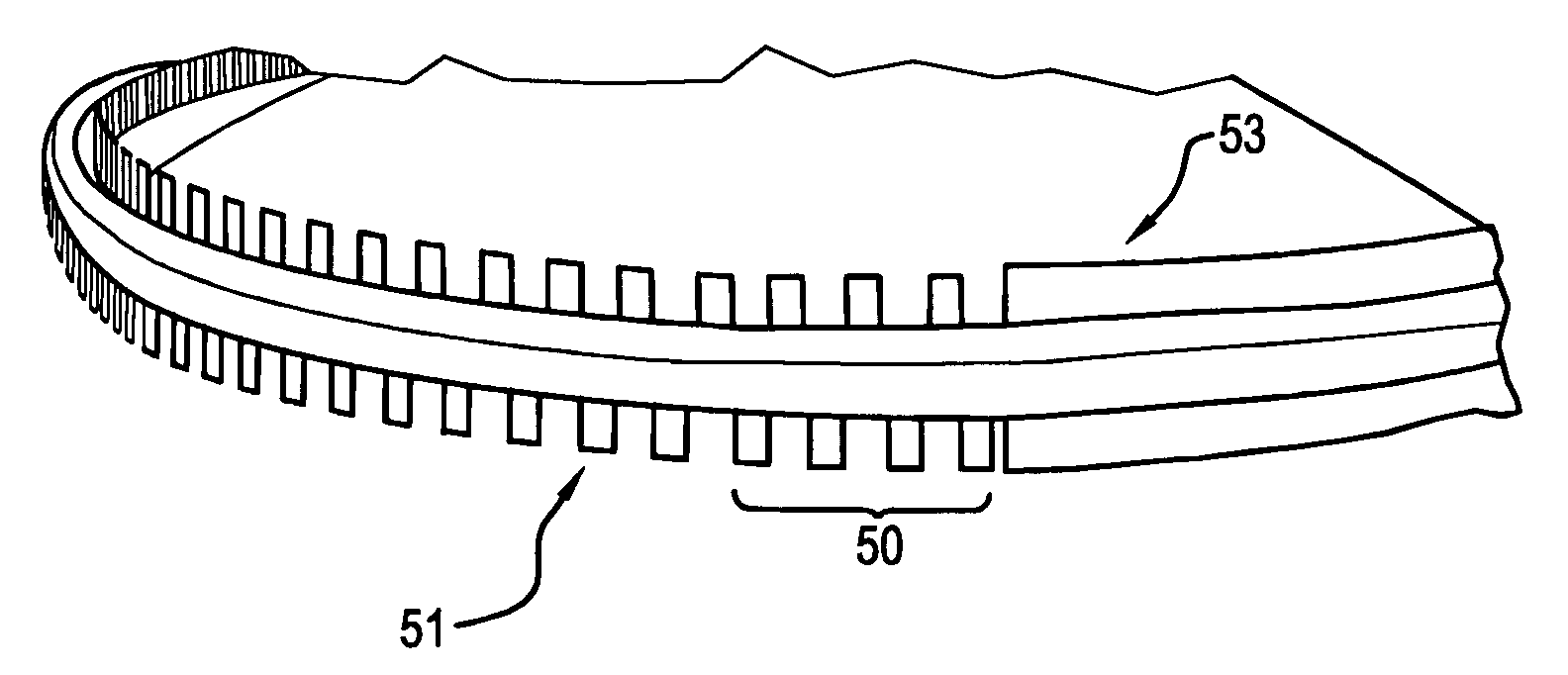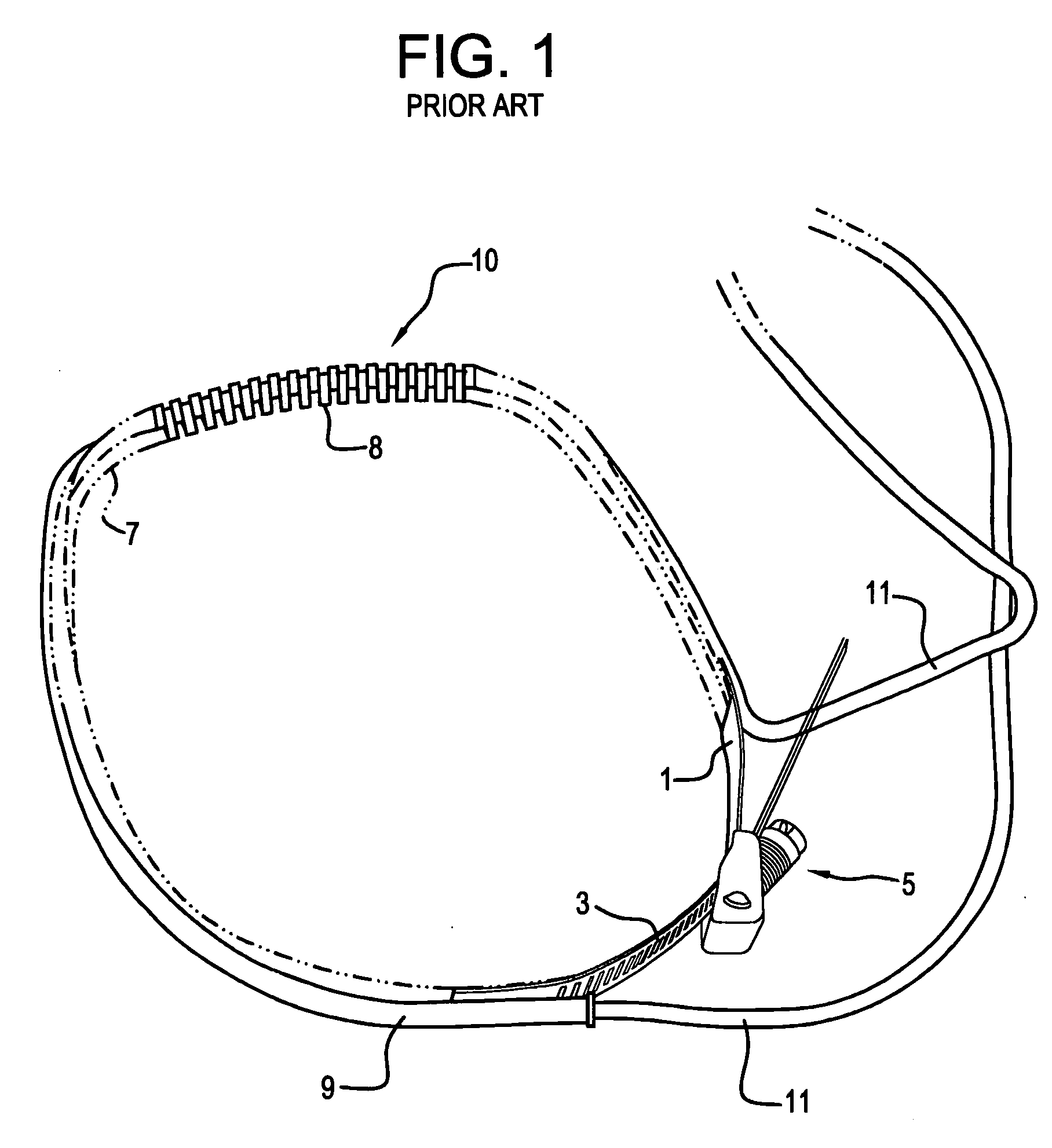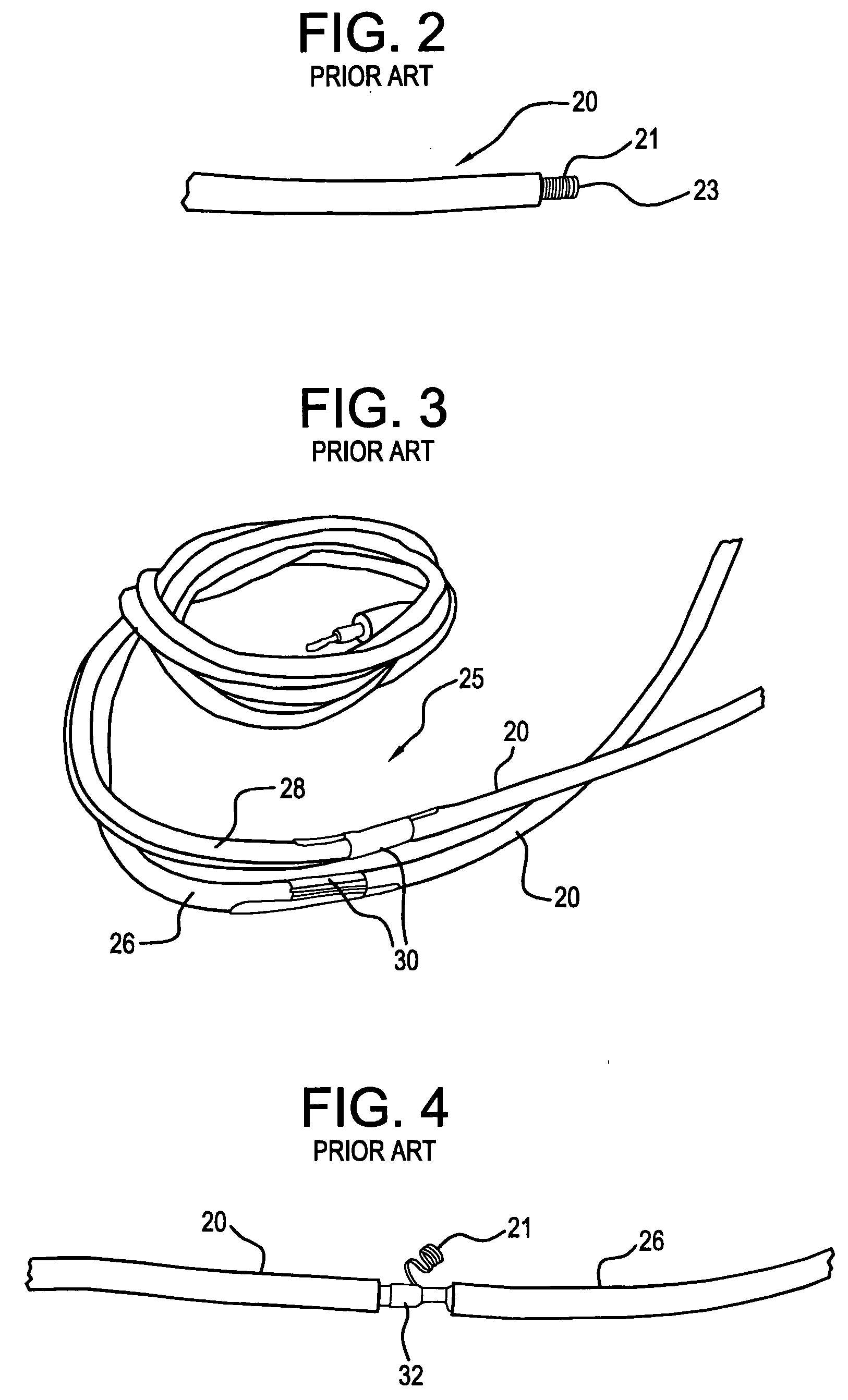Splice connection assembly using heat shrinkable tubing, metal sheathed heater using same, and method of making
a technology of splice connector and heat shrinkable tubing, which is applied in the direction of insulated conductors, cables, cables, etc., can solve the problems of time-consuming and costly procedure, the end of resistance wire and/or the end of stranded lead wires may not be properly captured by the splice connector, and the use of silicone wiring for the heater cable and lead wires. , to achieve the effect of less cost, less diameter and more durabl
- Summary
- Abstract
- Description
- Claims
- Application Information
AI Technical Summary
Benefits of technology
Problems solved by technology
Method used
Image
Examples
Embodiment Construction
[0041] The present invention offers significant improvements in the field of metal sheathed heaters, including the heaters themselves, and their methods of making and using. By eliminating the molding operation using a silicone compound to insulate the splice connection surrounded by the metal sheath, tougher lead wires can be used, improved pulling resistance can be obtained, improved sealing and protection of the splice area are realized, and costs are reduced by eliminating silicone lead wires.
[0042]FIG. 6 shows one aspect of the improved metal sheathed heater, wherein a section 50 near the end of a metal sheath 51 has a diameter slightly larger than the remainder of the sheath. This drawing also shows the clamp end 53 welded to an end of the sheath. It should be noted that the welding operation wherein the clamp end and teeth are welded together causes the teeth to become part of the clamp end. This same enlarged diameter section 50 is found on the opposite end of the metal she...
PUM
| Property | Measurement | Unit |
|---|---|---|
| diameter | aaaaa | aaaaa |
| heat shrinkable | aaaaa | aaaaa |
| adhesive | aaaaa | aaaaa |
Abstract
Description
Claims
Application Information
 Login to View More
Login to View More - R&D
- Intellectual Property
- Life Sciences
- Materials
- Tech Scout
- Unparalleled Data Quality
- Higher Quality Content
- 60% Fewer Hallucinations
Browse by: Latest US Patents, China's latest patents, Technical Efficacy Thesaurus, Application Domain, Technology Topic, Popular Technical Reports.
© 2025 PatSnap. All rights reserved.Legal|Privacy policy|Modern Slavery Act Transparency Statement|Sitemap|About US| Contact US: help@patsnap.com



